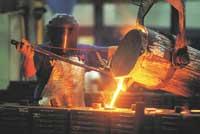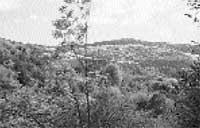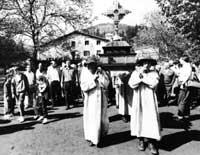Iron: precious metals of the Basques
2003/08/17 Rementeria Argote, Nagore - Elhuyar Zientziaren Komunikazioa

The Pagoeta Natural Park (Gipuzkoa) is currently a unique place of leisure, but in it one of the hardest works of three centuries ago was developed: the steel mill. Around the oven we can imagine strong sweating ferrones, the sound of the hammer, the rhythmic movement of the bellows. This is an image that we could see in an infinite number of Euskal Herria ferries.
In the ferns, the water force of rivers or streams was used to move the hammer and bellows. For this reason, the ferns were built on the banks or surroundings of the river. A water jump made the hydraulic wheel turn and the mechanism associated with the axle of the wheel actuated the hammer and bellows inside the forge.
The strength of water greatly facilitated the work when extracting iron. But when the flow decreases, what? It seems they had no choice but to stop the ironwork. For this reason, in summer most of the ferns stopped working. In addition, the hottest times of the year were not the most suitable for working around an oven with temperatures over a thousand degrees. For this reason, the ferrones worked in other works during the summer, waiting for the fall rain.
In Agorregi, however, not only were the ferns in summer, but in winter, in the absence of relatively frequent rains, they did not have enough flow to move the entire mechanism. To deal with the problem, a very special architecture was used in the XVIII. When it was reformed and reinitiated in the twentieth century.
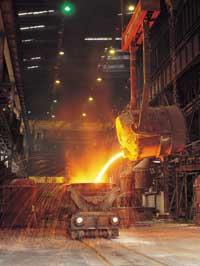
In fact, more than half of the rainwater surrounding Mount Pagoeta evaporates or is absorbed by the plants. For this reason, the architect Francisco de Ybero designed a forge with two ramps fed by three channels to make the most of the scarce and versatile flow that went down the hillside. With this special design, the maximum part was drawn to the water, since in addition to the ironwork there were two mills in Agorregi. Apparently, although the design was very smart, it did not achieve the expected success and only remained in operation for a few years.
A topic that surprises many historians. XVIII. In the twentieth century they renewed and launched a forge? Did you still not know the bakery in Euskal Herria? It can be said that they knew him because the Real Sociedad Bascongada de Amigos del País tried to introduce the new technology, but the ferns maintained the traditional method.
It is difficult to say to what extent the advance of technology was not accepted. You may prefer to produce good quality iron to produce large quantities. However, little by little space was being lost in the foreign markets, among other things because the traditional iron extracted was more expensive. And although it was centuries after that in other countries, the XIX. In the eighteenth century the Basque steel mill approved the advances and began to use the method of the blast furnaces. Thus, in a short time the ferns stopped working. Some continued to function as a mill and others took advantage of generating electricity. However, the ferns and their utensils deteriorated the times and with it the traditional steel industry was lost.
Recipe of iron
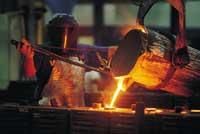
In an era in which we live surrounded by new and complex technologies, we can think that the old tasks were simpler than the current ones. Although the media were more basic, the development of techniques required the experience of many generations, so it was enormously accurate methods. For example, work in ferns. It doesn't seem to have much mystery, doesn't it? Mix iron ore with charcoal, crush it and heat it in the oven. The recipe is very simple. But today we are able to go to a forge and extract iron?
Yes and no. In some sessions, iron has been extracted following the ancient method. This has been a great job, of course, to obtain documentation in the archives on the ferns, the recovery of the tooling and the dedication to tests, since it is not easy to know why the failure or success of each test. And yet, at the end of the process, the benefit of yesteryear has not been achieved. Time has hidden the traces of this traditional work and that branch of Basque culture has been lost. But these attempts to extract iron have contributed to a better knowledge of an old trade and, incidentally, to an important stage in the history of the Basque Country.
Published in 7K.

Gai honi buruzko eduki gehiago
Elhuyarrek garatutako teknologia




